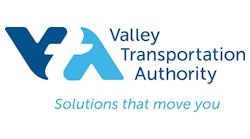One word to describe yourself: Self-motivated
Alma Mater: University of Toronto, UCLA
Fun fact about yourself: I’ve skipped two grades in school.
Favorite station or stop that you have ever visited or frequent (and why): Burrard station in Vancouver. It was my weekday destination station when I was working there. Burrard is at the heart of downtown Vancouver with convenient access to everywhere and I always enjoy the cherry blossom at this station during the springtime.
Nicole He has diverse technical skills and experience in both transportation engineering and planning fields, including multimodal travel demand modeling, transportation impact assessment, spatial analysis, transportation grants and funding management. Over the past seven years, He built her career in the transportation industry through various positions in public transit and private consulting firms across North America.
In 2015, she received her bachelor’s degree in applied science with a specialization in infrastructural engineering from the University of Toronto. She also received a scholarship from the National Sciences and Engineering Research Council of Canada (NSERC) for her outstanding work in population synthesis and travel demand forecasting. During her graduate study of urban planning at the University of California, Los Angeles, her passion for transportation planning thrived after completing a robust transit ridership analysis of L.A. Metro’s rail extension and local Culver City Bus at the city of Culver City, Calif. The analysis explored different factors causing the decline in transit ridership such as transportation network companies and route deficiency and recommended strategies to reduce operational costs and increase productivity.
She then worked for two years as an analyst and engineer-in-training in Vancouver. Her research on minimum residential parking standards and transportation demand management guidelines advanced the elimination of minimum residential parking requirements in downtown Vancouver. This work drives more affordable housing in communities and promotes active transportation modes. She also completed several macro-level transportation demand forecasts in different city center redevelopments throughout the Greater Vancouver region. He’s work reflects her advocacy for mixed-use planning and complete streets design.
He was quickly promoted within a year after joining Santa Clara VTA. She’s currently transportation planner III at VTA and is leading and managing several competitive grant programs under the 2016 Measure B local sales tax program in Santa Clara County. In this role, she led the creation of an online and interactive program manual as well as maintaining a transparency website for the sales tax measure. Both features received positive feedback from the public and local staff. They not only promote the transparency of the sales tax measure but also facilitate the coordination between VTA and local jurisdictions. She serves as a key liaison with 16 jurisdictions and develops the program framework for countywide bicycle and pedestrian projects, grade separation projects and innovative transit service models. She recently helped launch on-demand services in Morgan Hill and Milpitas to promote first- and last-mile connections to transit in the Bay Area. She also oversees a Bicycle & Pedestrian Education and Encouragement program, which helps local agencies in developing their Safe Routes to School programs and any educational activities. In the past three years, He helped fund and manage many multi-million-dollar active transportation and congestion management projects throughout Santa Clara County that promote walking, cycling and transit.
He is active in advancing women in transportation and science by hosting several career workshops for young women in science and engineering during her time in Toronto. She was involved in several transportation organizations such as WTS and Young Professionals in Transportation, and she continues to share her work experience with young students and exchange ideas with planning and engineering professionals. She often volunteers and provides technical support to other coworkers and students by teaching GIS lessons and travel demand modeling tools.
He never stops learning and expanding her knowledge in transportation. She is self-motivated and currently pursuing her Professional Engineer license in California. Through her current work at VTA, she grows her interest in the integration of big data, transportation planning and social equity, so she is self-learning various data analysis tools and hopes to apply this skill to the scheme of funding infrastructure projects.
Is there a specific experience that led you to where you are today?
My internship at Culver City Bus six years ago led me to where I am today. The experience offered me a first-time opportunity to understand bus schedule planning and operations in the transit industry. It further inspired me to think of transportation mobility and multimodal planning and transformed my perspective from a traffic engineer to a “plangineer.” Learning from my supervisor, I also developed interpersonal communication and critical thinking skills which benefited me throughout my career.
What do you enjoy most about your job?
I enjoy most working with our people at VTA. My job requires a lot of coordination with different departments within the agency. When I need guidance, my supervisors and coworkers are always supportive and resourceful. I am lucky to be part of the VTA family and I always learn from these knowledgeable and passionate people who devotedly serve the communities.
Best advice/tip/best practice to share from your area of expertise?
Ask questions and never stop learning. The transportation industry is evolving rapidly in every aspect: technology, policy, and human behavior. It is important to stay informed about the changes and be ready for new transportation challenges.




